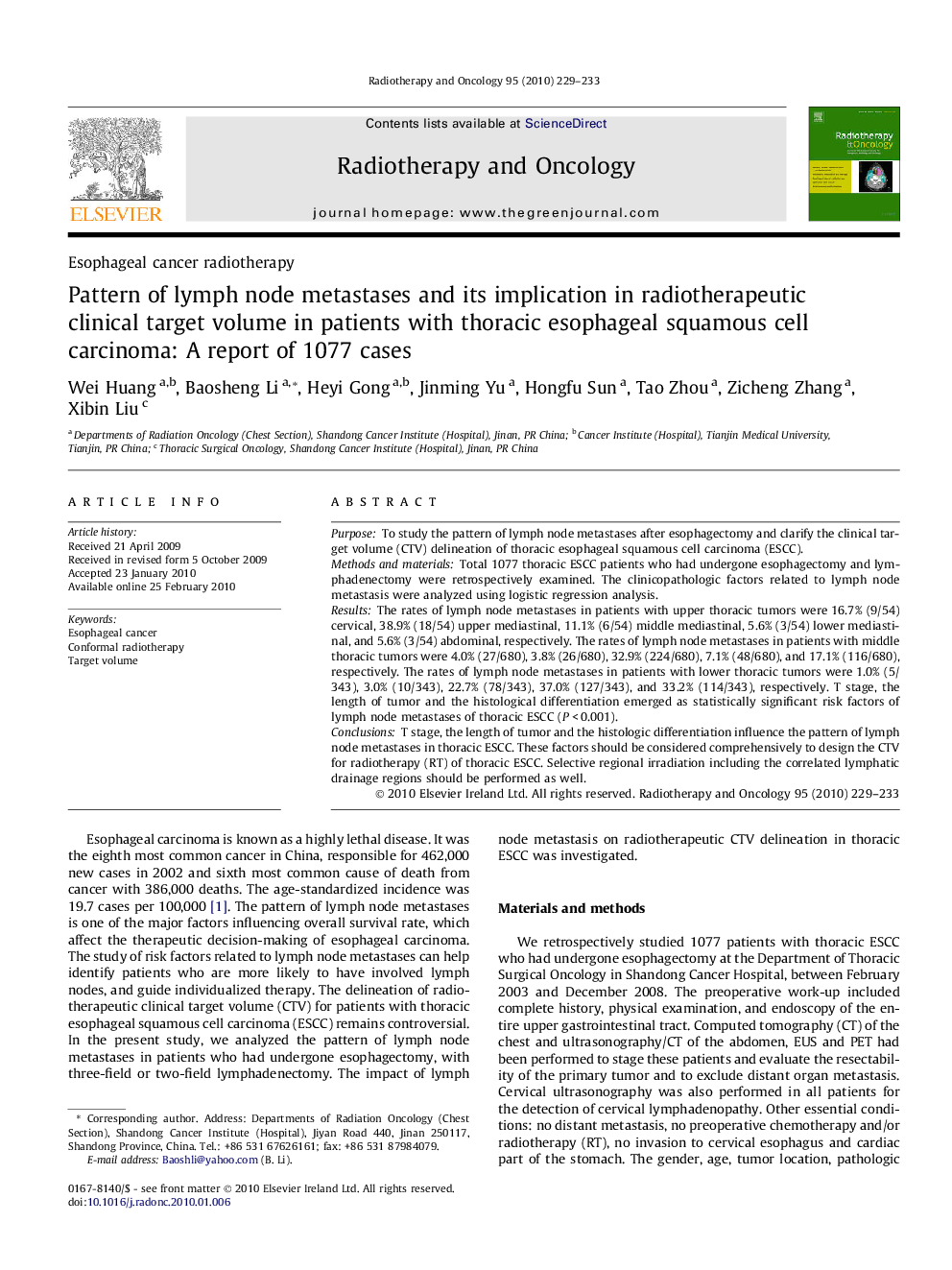| Article ID | Journal | Published Year | Pages | File Type |
|---|---|---|---|---|
| 2159412 | Radiotherapy and Oncology | 2010 | 5 Pages |
PurposeTo study the pattern of lymph node metastases after esophagectomy and clarify the clinical target volume (CTV) delineation of thoracic esophageal squamous cell carcinoma (ESCC).Methods and materialsTotal 1077 thoracic ESCC patients who had undergone esophagectomy and lymphadenectomy were retrospectively examined. The clinicopathologic factors related to lymph node metastasis were analyzed using logistic regression analysis.ResultsThe rates of lymph node metastases in patients with upper thoracic tumors were 16.7% (9/54) cervical, 38.9% (18/54) upper mediastinal, 11.1% (6/54) middle mediastinal, 5.6% (3/54) lower mediastinal, and 5.6% (3/54) abdominal, respectively. The rates of lymph node metastases in patients with middle thoracic tumors were 4.0% (27/680), 3.8% (26/680), 32.9% (224/680), 7.1% (48/680), and 17.1% (116/680), respectively. The rates of lymph node metastases in patients with lower thoracic tumors were 1.0% (5/343), 3.0% (10/343), 22.7% (78/343), 37.0% (127/343), and 33.2% (114/343), respectively. T stage, the length of tumor and the histological differentiation emerged as statistically significant risk factors of lymph node metastases of thoracic ESCC (P < 0.001).ConclusionsT stage, the length of tumor and the histologic differentiation influence the pattern of lymph node metastases in thoracic ESCC. These factors should be considered comprehensively to design the CTV for radiotherapy (RT) of thoracic ESCC. Selective regional irradiation including the correlated lymphatic drainage regions should be performed as well.
